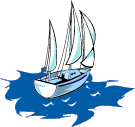
Ships and Shipping?

Goals:
1. To acquire a background on the idea of owning your own ship and shipping in general.
2. To begin to understand the technology and logistics of a shipping business.
Resources:
1. Multiple copies of Timothv of the Cav by Theodore Taylor (1993)
2. Non-fiction book on shipping, ships, freighters, cargo ships. For example Cargo Ships by Herbert S. Zim, New York, Morrow, 1970., Freighters by George Ancona, New York, Carewell, 1985., Ships Through History by Ralph Ward Indianapolis, Bubbs-Merrial, 1973., and The Ship by Bjorn Landstron, Golden City New York, 1969. (early 1900's)
3. Multiple maps of various regions of the world. Focusing on areas of major ports and shipping lanes.
4. Internet Sights:
http://www.access.digex.net/~rjeffrey/Home.htm
Time:
Not including time it takes to read the novel, this lesson will require about 3 1/2 to 7 1/2 hours. Steps 2-4 allow about 30 minutes to 1 hour, steps 5 and 6 allow 2-5 hours, steps 7 and 8 allow 1 hour to 1 1/2 hours.
Procedure:
Introduction:
Students will use their knowledge of the novel to help them find information and play the game.
Step 1 Read the novel.
Step 2 Individually each student will outline Timothy's quest to own his own ship. What did he do to save money? How was he able to pay for his ship? How did he learn to navigate a ship? Where did his travels take him? What did he ship? What affected his income?
Step 3 Break students into groups of 3 or 4.
Step 4 Students compare and discuss outlines in their groups.
Step 5 Teams work on team topics that will cover subjects such as, the different ships used in the novel, the terminology of ships, the navigation of ships, shipping in general, port cities, what was shipped in the early 1 900's like, maps. Not limited to these topics. Each team will choose a topic they would like to become experts on. They will begin their research by brainstorming ideas as a group. The students will be allowed time in the library as well as time in the computer lab or use of the computer in the room. Teams will be encouraged to use at least 5 different sources for their information, including interviews in person and over the phone, magazines and journals as well as the internet. The teacher will have a meeting with each group on the second day of this lesson to ensure the groups are on the right track.
Step 6 Teams report findings in a presentation format fit to the teams liking. Other students will evaluate presentations. (An example attached) The students will be given the evaluation sheet at this time so they can prepare the presentation to work with the evaluation. This presentation should be informative to the rest of class, try to encourage more of an engaging presentation then just students standing up in front of the class talking. Encourage visual aids, graphs, charts, or videos or pictures to help the others students get a better idea of what they are trying to present.
Step 7 Teams come back together to go through notes on the presentations to set the foundations for their own shipping company such as, choosing a ship, choosing a home port, naming their ship, form their team identity and goals. After all the groups have presented allow time for groups to come back together to combine their notes, discuss what they learned by having each of them come up with a question to ask the other members of their group. They continue this until all questions have been asked. This will be a foundation for the simulation project at the end of the second week.
Step 8 Report on step 7. Students will choose one person to summarize the groups discussion. Each member will summarize in their journals. The questions could be turned in as an assessment of what was discussed.
Assessment:
1. Each student will be responsible to turn in their outlines of Timothy's quest for a ship. (Criteria for success = each student must have 2 accurate examples for each question)
2. Presentations from groups (Criteria for success = Have peer evaluations sheets filled out. Teacher will also evaluate on the basis of organization, information presented, and a visual aid.)
3. Each group will begin a journal of their company. This will be the first of a number of reviews of the journals. (Criteria for success = Must be turned in, complete information, neatness, organization, meet requirements of each lesson or entry.)
Curricular Strands and Major Concepts:
1. Language Arts - Using the novel as a means to start research of a project, used in communicating with group members and in the keeping of a journal.
2. Social studies - History of various ships, research of maps, and different port cities and cultures.
3. Science/Math -Research on navigation skills and various types of ships and how they are powered.
Possible Extensions:
1. Have a ship builder or a person from a shipping company come in to discuss different aspects of their industries.
2. Talk about how maps are made, drawn, and read.
3. Design a ship.
4. More possible resources Tall Ships by Kathryn Lasky, New York, Scribner, 1978, Wonder Tales of Seas and Ships by Frances Carpenter, New York, Doubleday, 1959.